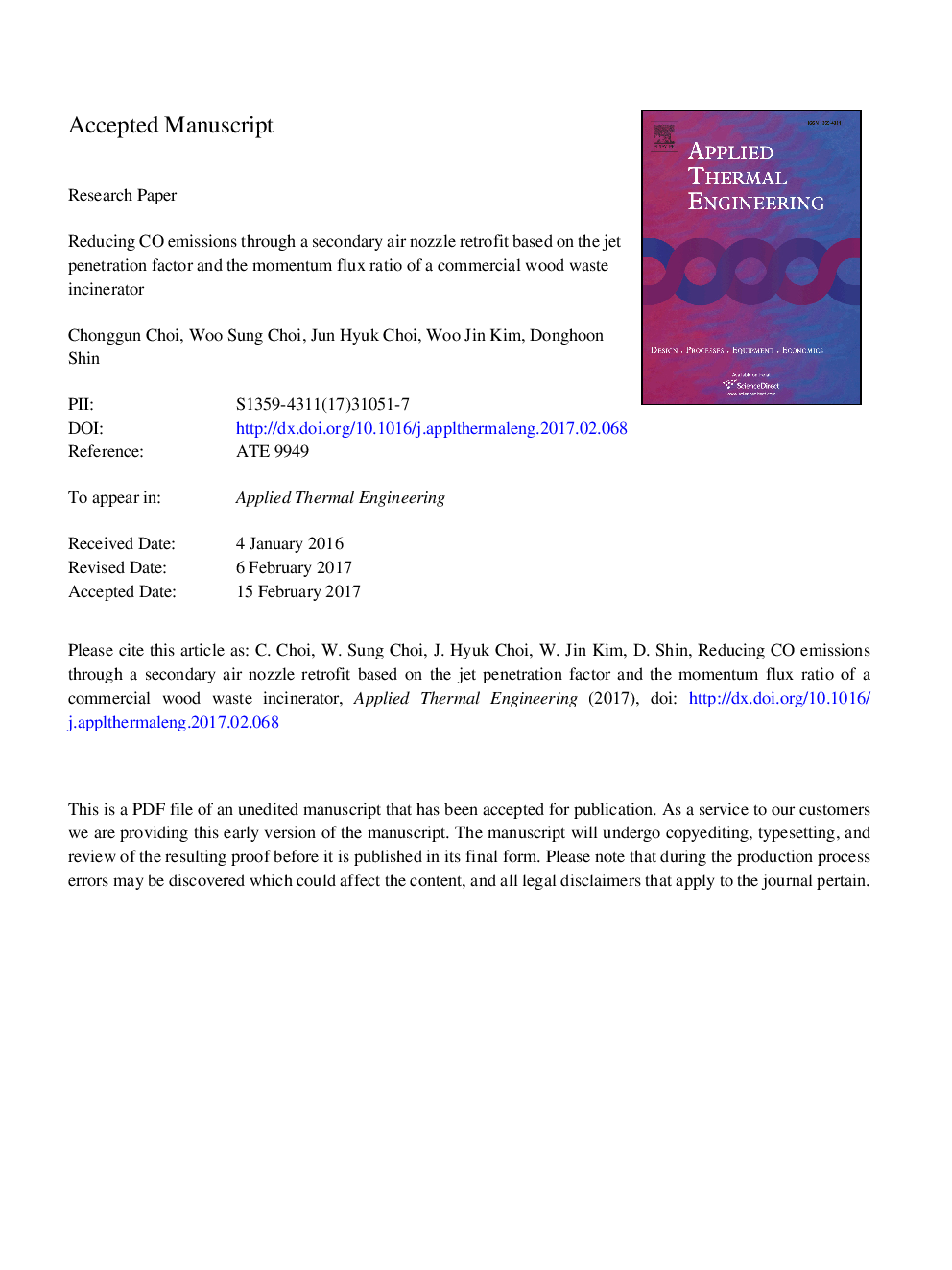| Article ID | Journal | Published Year | Pages | File Type |
|---|---|---|---|---|
| 4991344 | Applied Thermal Engineering | 2017 | 29 Pages |
Abstract
The combustion process in an incinerator inevitably generates pollutants such as carbon monoxide (CO). In this study, we looked at a grate-type commercial wood waste incinerator, whose CO emissions are above those of the regulation of 50Â ppm at a 12% O2 basis. In order to reduce the CO emissions, we modified the configuration of the secondary air nozzles of the incinerator plant, based on the jet penetration factor and momentum flux ratio of secondary air to primary air. A computational prediction and experimental measurements were performed to investigate the effect of this retrofit. A computational fluid dynamics (CFD) analysis showed that the retrofit made the secondary chamber flow more uniform, and decreased the standard deviation of the O2 and vertical velocity in the chamber. A comparison of the temperature and O2 concentration in the measurement port showed the CFD result can be used to predict the flow and combustion phenomena in the combustion chamber. The CO concentration at the furnace outlet of the retrofit decreased by 94.7% in the numerical study; a similar trend was observed in the experimental measurements, where the emissions decreased from 96.3Â ppm to 43.4Â ppm.
Related Topics
Physical Sciences and Engineering
Chemical Engineering
Fluid Flow and Transfer Processes
Authors
Chonggun Choi, Woo Sung Choi, Jun Hyuk Choi, Woo Jin Kim, Donghoon Shin,
